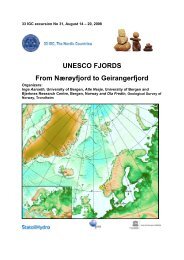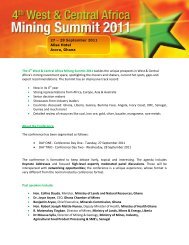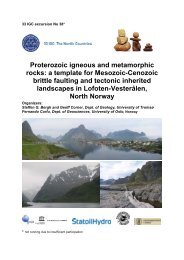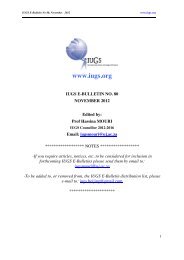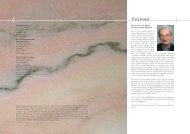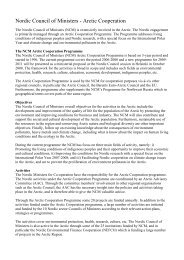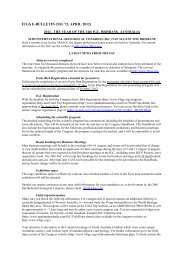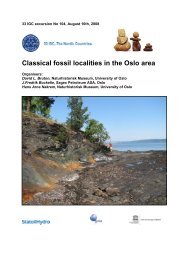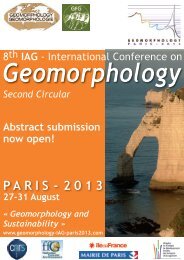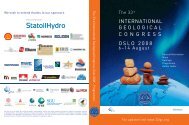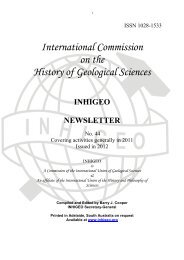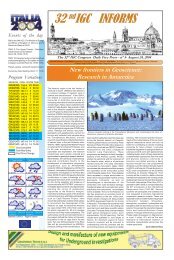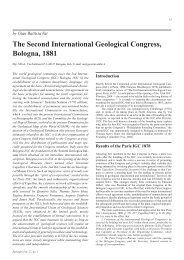You also want an ePaper? Increase the reach of your titles
YUMPU automatically turns print PDFs into web optimized ePapers that Google loves.
No glaciers exist in the area with these large bedrock forms today, nor are there any signs of<br />
previous Holocene glaciation. If the Holocene is taken as the normal climatic conditions for<br />
interglacials, the conclusion would be that the cirques were formed during periods colder than<br />
today, but still not cold enough for ice sheet growth and overriding. Hence, these cirques and<br />
valleys likely represent the accumulated effect of cirque and valley glacier activity during<br />
many Quaternary interstadials.<br />
The ice-marginal features. End and lateral moraines, meltwater channels can be seen in N-W<br />
Lovozero Mountains, these forms and ice-contact deltas and ice dammed lake features – in its<br />
other parts. They are found on the surrounding slopes and valley sides inside the mountains.<br />
The 1 st and 2 nd Raslaka Cirques hold till (called "cirque infills") which seem to have been<br />
overridden by glacier ice and smeared out in the cirques (Fig. 2.6). The surfaces are<br />
hummocky and show no regular pattern, except occasionally faint flutings, for example in 1 st<br />
Raslaka Cirque. These landforms are seen on the map as large marginal moraine (Fig. 2.3).<br />
On the intermediate and lower slopes surrounding Lovozero Mountain and in U-shaped<br />
valleys small marginal moraine can be also found. They look as lateral moraines and arcuate<br />
end moraines.<br />
The lateral meltwater channels are the signals carring environment information. These forms can<br />
be found on the lower slopes of the N-W Lovozero Mountains (Fig. 2.7, a). As usual, the<br />
forms have asymmetric cross section with a steeper lower slope. The erratic boulders can be<br />
found at its bottom. The channels formed during several days. In the following they can be<br />
used for surface washing out. The channels’ deepth varies from a few tens of centimeters to<br />
several meters. They usually cross the slope surfaces across their dipping (Fig. 2.7, b) and<br />
indicate the predominant direction of the melt-waters washing out. Lateral meltwater channels<br />
encircle the summits. In the northern mountains they cross the southern part of the marginal<br />
ridge (Fig. 2.8).<br />
Notice that on the southern slopes of the Lovozero Mountains (area of Rayjavr Lake and<br />
Engporr Mountain) the one of the Europe largest meltwater channels’ fields is revealed.<br />
In some valleys of the Lovozero Mountains, well-developed end moraines indicate the<br />
deposition from local cirque glaciations. In the N-W Lovozero Mountains these arcuate end<br />
moraines are situated in U-shaped valleys. In some areas they overlap and cross-cut the<br />
marginal continental ice moraines extending into the valleys. Whether they are younger or<br />
older has not yet been unambiguously determined.<br />
20



